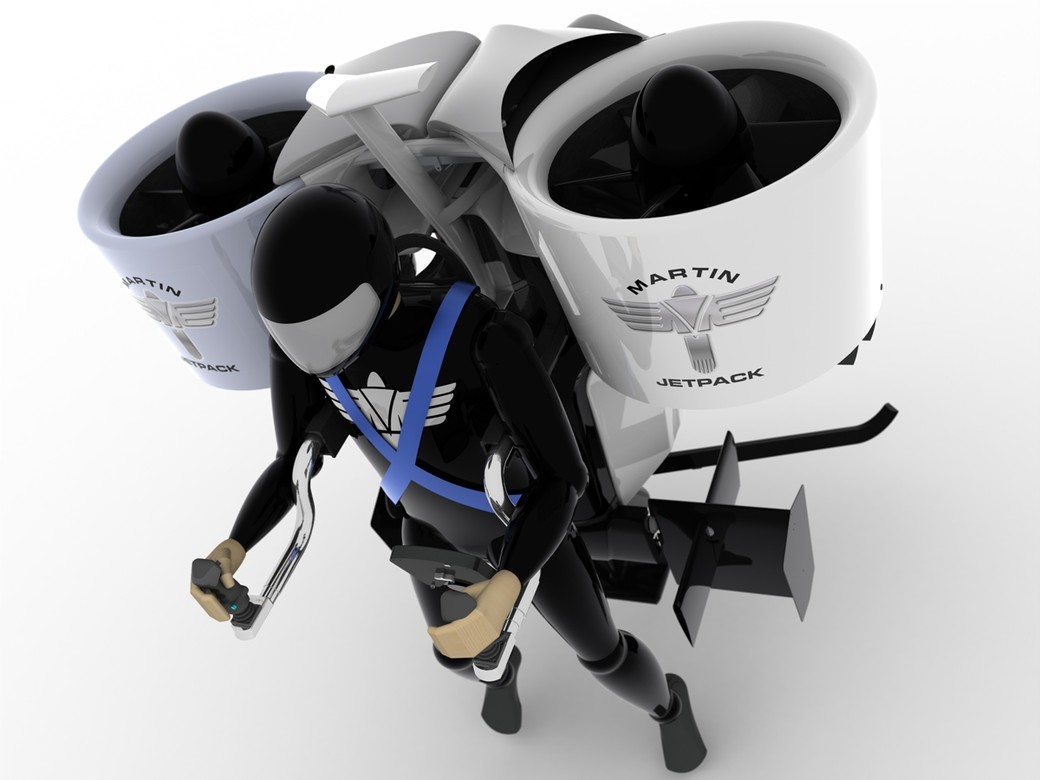
Putting the “Science” in “Science Fiction” – Rocketeer 2
Humans have dreamt of flight for centuries, as the story of Icarus’ wax wings and Leonardo da Vinci’s plans for an ornithopter show. The idea of soaring through the air like a bird, propelled by the beating of powerful wings, has captured imaginations for ages, though progress on achieving the goal of personal flying machines has been very slow. The Rocketeer is a film that captures some of the opportunities and dangers that would accompany a device that allows for personal flight. Attempts to create a man-portable flying system date to centuries ago, but the first real progress in creating a personal flight system came in the 1940s with the German Army’s Himmelstürmer system.
By doing away with wings and relying on a rocket to provide thrust and lift this system, its wearer could make rocket-assisted leaps. Although technology has greatly progressed since then, there has been fairly little progress in jetpack technology. Most current models use rockets or small jet engines to allow for flight, but these systems carry too little fuel for anything but very short flights. Conventional jetpacks also present safety concerns due to the heat of their exhaust. Some inventors have attempted to fix this problem by creating wing packs, allowing more fuel to be carried and the jets to be placed a safe distance from the wearer’s body, but so far these packs are very heavy and must be launched from a high point rather than the ground.
Many of the problems in creating functioning jetpacks are inherent to rocket and jet engine technology, and so some researchers have attempted to use other methods to create a personal flight pack. One of the most promising of these technologies is the same type of ducted fans that other inventors are envisioning as the propulsion system for hover vehicles. Placing the propeller inside a cylindrical housing creates a propulsion system that is more powerful and much safer than a conventional rotor. The advantages of this type of system can be seen in the prototypes produced by Martin Jetpack. The latest prototype model uses a pair of ducted fans to carry it and its wearer aloft. Using two fans increases weight but also greatly improves the device’s thrust and cancels out the torque of the engines, improving stability and eliminating the need for a dangerous tail rotor. The Martin Jetpack has other safety features as well, including a built-in parachute system that causes the vehicle to hover rather than crash if the wearer does not give it input, and a design that will protect the wearer in case of impact.
Unfortunately, the heavy engines and fuel supply make the Martin Jetpack weigh too much to be carried around, like some rocket-powered jetpacks, but it also has a much greater flight time. As opposed to most modern personal flight systems, which carry several seconds to a few minutes of fuel, the Martin Jetpack is capable of flying for 30 minutes at a speed of nearly 60 km/h when fully fuelled. The Martin Jetpack also has a great deal more versatility because of its fuel supply, since it runs on standard automotive gasoline instead of using one-use rocket engines or expensive chemicals like hydrogen peroxide. This will make flying a Martin Jetpack much less expensive than other jet and rocket packs, and means that its fuel will be more widely available. The Martin Jetpack may still be a work-in-progress, but it is a very promising design, with sales to government agencies scheduled for 2014 and civilian sales starting in 2015.
Ducted fans solve many issues relating to the creation of jetpacks, but there are still hurdles to overcome when attempting to create an economical and safe personal flight system. The factor that still limits jetpacks the most is weight, and creating a lightweight system that can carry a human being aloft is still a serious challenge. Composite materials and smaller engines have already helped to reduce the weight of jetpacks, but we are still a long way from the simple backpack sized deign of The Rocketeer. This is a particularly difficult challenge to address, due to the weight of engines and fuel.
The weight issue is also part of a vicious cycle, since a higher weight requires more thrust to lift it, and thus requires more powerful engines and more fuel, which add to the weight of the design. As technology progresses, these issues will be addressed, and it is possible that jetpacks will become light and cheap enough that average people will be able to consider buying them. One technology that seems especially promising for jetpacks is the creation of advanced batteries that weigh less and store a great deal more power than modern conventional versions. By combining these new batteries with lightweight electric motors, it may be possible to create smaller and lighter jetpacks for personal use, opening up a whole new chapter in the history of personal transportation.
















